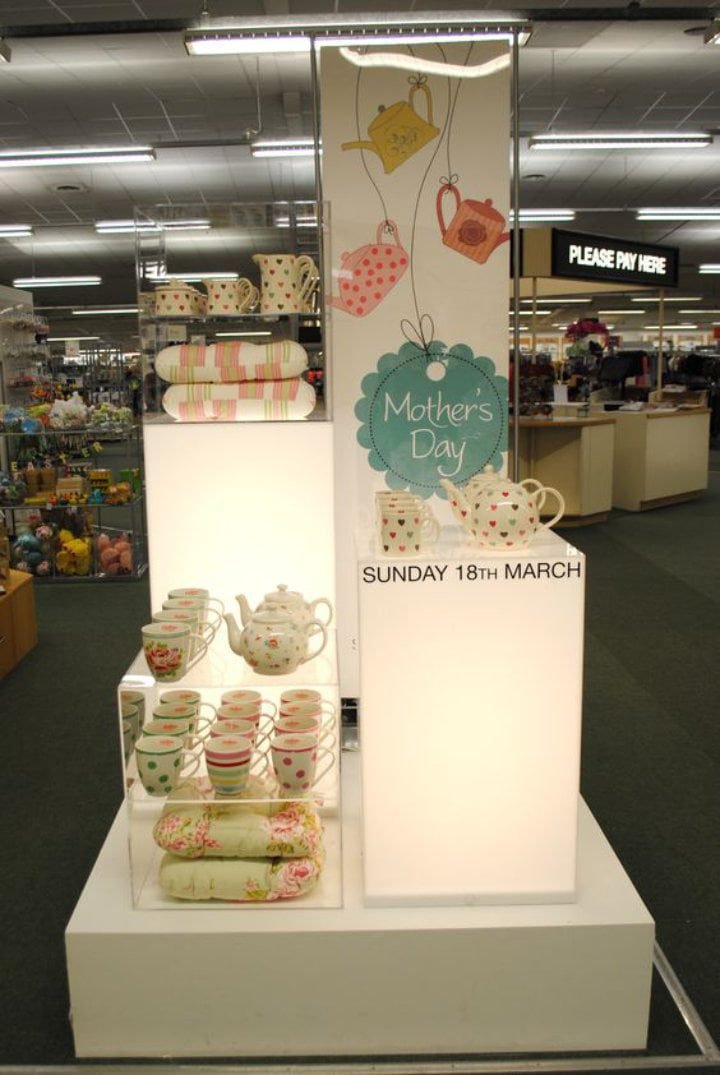Introduction to Merchandising in Marketing
Merchandising in marketing refers to the practice of promoting and selling products through various strategies, such as product placement, pricing, and promotion.
In This Article
The primary goal of merchandising is to present products in an enticing way that encourages customers to make a purchase.
This can be achieved by creating attractive displays, offering discounts or promotions, and strategically placing products in stores or online platforms.
Importance of merchandising in marketing strategies
Merchandising plays a crucial role in the success of marketing strategies for businesses. It helps create a positive image for the brand, attract customers, and drive sales.
Effective merchandising can help differentiate a brand from its competitors, enhance the overall shopping experience for customers, and ultimately increase profitability.
By carefully planning and executing merchandising strategies, businesses can effectively showcase their products and increase their visibility in the marketplace.
Types of Merchandising
Visual Merchandising


Visual merchandising is the art of creating captivating displays and layouts to attract customers and showcase products in a retail setting.
This can include designing window displays, arranging the store layout, placing products strategically, and using signage, and lighting.
The goal of visual merchandising is to create an attractive atmosphere that enhances the shopping experience and inspires customers to make purchases.
Retail Merchandising
Retail merchandising involves the process of planning, organizing, and promoting products within a retail store. This includes determining the appropriate product assortment, pricing, promotions, and positioning within the store.
Retail merchandising also involves analyzing sales data, monitoring inventory levels, and adjusting strategies to optimize sales and profits.
The significance of retail merchandising is that it plays a vital role in driving customer traffic and increasing sales within a physical retail location.
Online Merchandising
Online merchandising is the practice of effectively presenting products on e-commerce websites to increase online sales. This involves creating product descriptions that are engaging, images that are of high quality, and easy-to-use navigation to enhance the online shopping experience.
Online merchandising also includes analyzing customer behavior through data analytics to optimize product recommendations and provide a personalized shopping experience. Effective online merchandising strategies can help increase conversion rates and drive revenue for online retailers.
Key Elements of Successful Merchandising
Product Placement


Product placement is a vital component of effective marketing. It involves placing products in specific locations within a store to capture the attention of customers and promote sales.
Placing popular or high-profit items at eye level, near the entrance, or in high-traffic areas can increase visibility and drive sales. Besides, grouping related products together can help customers find complementary items and increase their overall purchase value.
Pricing Strategies
Pricing strategies are crucial for the success of any business. Retailers must take into account several factors while setting prices, such as production costs, competitor pricing, and consumer perception.
Utilizing strategies like pricing products slightly below competitors, using psychological pricing techniques (for instance, setting the price at 99.99 instead of 100 rupees), or providing bundle discounts can help increase sales and profitability.
Promotions and Discounts


Promotions and discounts are highly effective tactics in the world of merchandising. By offering limited-time promotions, buy-one-get-one-free deals, or discounts for loyalty program members, businesses can create a sense of urgency and motivate customers to make a purchase.
Moreover, hosting sales events or clearance promotions can help businesses sell off slow-moving inventory and generate buzz around the store.
Packaging and Presentation
Packaging and presentation are crucial parts of successful merchandising, but they are often overlooked. A well-designed package can grab customers’ attention, convey the benefits of the product, and create a positive brand image.
In addition, organizing and displaying products in an attractive and orderly fashion can improve the overall shopping experience and help customers locate what they need more easily.
Investing in high-quality packaging and thoughtful product displays can differentiate a store from competitors and boost sales in the long run.
Merchandising Techniques
Cross-Merchandising
Cross-merchandising is a retail strategy that involves displaying complementary products together to encourage customers to make additional purchases and increase sales. For instance, milk, bread, butter, and curd are usually placed together in retail stores.


Similarly, a clothing store could showcase shoes next to matching outfits, or a kitchenware store could display utensils next to cookware.
Retailers strategically place related items together to create a more convenient shopping experience for customers and increase the likelihood of impulse buys.
Upselling and Bundling
Retailers use upselling and bundling as strategies to increase their average transaction value. Upselling refers to convincing customers to buy a higher-priced item or an add-on to their original purchase, whereas bundling entails offering products together at a discounted rate.
These techniques help retailers maximize their revenue and enhance customer satisfaction by providing value-added options.
Seasonal Merchandising
Seasonal merchandising is a marketing strategy that involves customizing product displays and promotions to align with holidays, seasons, or specific events.


The main objective of retailers is to create a sense of urgency and motivate customers to make purchases based on the time-sensitive nature of the promotions.
For instance, during the winter months, a clothing store may showcase winter coats and accessories, while a grocery store may offer special discounts on holiday-themed products.
Trend-Based Merchandising
Trend-based merchandising means matching product offerings with the current preferences and trends of consumers. By keeping up with the latest fashion, technology, or lifestyle trends, retailers can attract customers who are looking for products that are relevant and popular.
To stay competitive in the constantly changing retail industry, retailers need to consistently keep an eye on market trends and adjust their product selection and marketing strategies accordingly.
Impact of Merchandising on Consumer Behavior
Impulse buying
Merchandising has a significant impact on consumer behavior, especially when it comes to impulse buying. When products are strategically placed, displayed attractively, and accompanied by limited-time offers, they can persuade consumers to make unplanned purchases.


Merchandising can create a sense of urgency or excitement, tapping into consumers’ emotions and leading them to make impulsive decisions.
Brand loyalty
Effective merchandising plays a crucial role in building and strengthening brand loyalty among consumers. By using consistent branding, appealing packaging, and engaging displays, brands can create a favorable impression and association with their products in the minds of consumers.
This can help cultivate a loyal customer base that keeps returning for more. By delivering a positive shopping experience through well-executed merchandising efforts, brands can establish a long-term, mutually beneficial relationship with their customers.
Perception of value
Merchandising can significantly affect how consumers perceive the value of products. By effectively showcasing a product’s features, benefits, and unique selling points through strategic merchandising, brands can effectively communicate their product’s value proposition to potential customers.
This can greatly influence a consumer’s willingness to pay a certain price for a product based on the perceived value that merchandising efforts have created.
Shopping experience


Merchandising not only affects buying decisions but also improves the overall shopping experience for customers. A store with well-planned layouts, attractive displays, and easy-to-find product placements can make shopping more pleasant and convenient for customers.
Good merchandising creates a visually appealing and user-friendly environment, leading to a positive shopping experience that encourages customers to return for more.
Case Studies of Successful Merchandising Campaigns
Coca-Cola and Nike are two companies that have effectively leveraged merchandising in their marketing campaigns. Coca-Cola has increased brand awareness and driven sales by strategically placing its branded merchandise in various retail locations and using creative displays.


Meanwhile, Nike has successfully utilized merchandising to create limited-edition products that generate buzz and excitement among consumers. By partnering with popular artists, designers, and celebrities, Nike has been able to create exclusive merchandise that fans are eager to purchase.
The success of Coca-Cola and Nike’s merchandising campaigns lies in their ability to create unique and desirable products that resonate with their target audience.
By leveraging their brand identity and creating limited edition items, they create a sense of exclusivity and scarcity that drives consumer interest.
Additionally, strategic partnerships and collaborations have expanded their reach and attracted new customers, resulting in increased brand visibility, customer engagement, and sales.
The CUET UG 2024 Mass Media and Communication syllabus under the Advertising section contains this topic.




